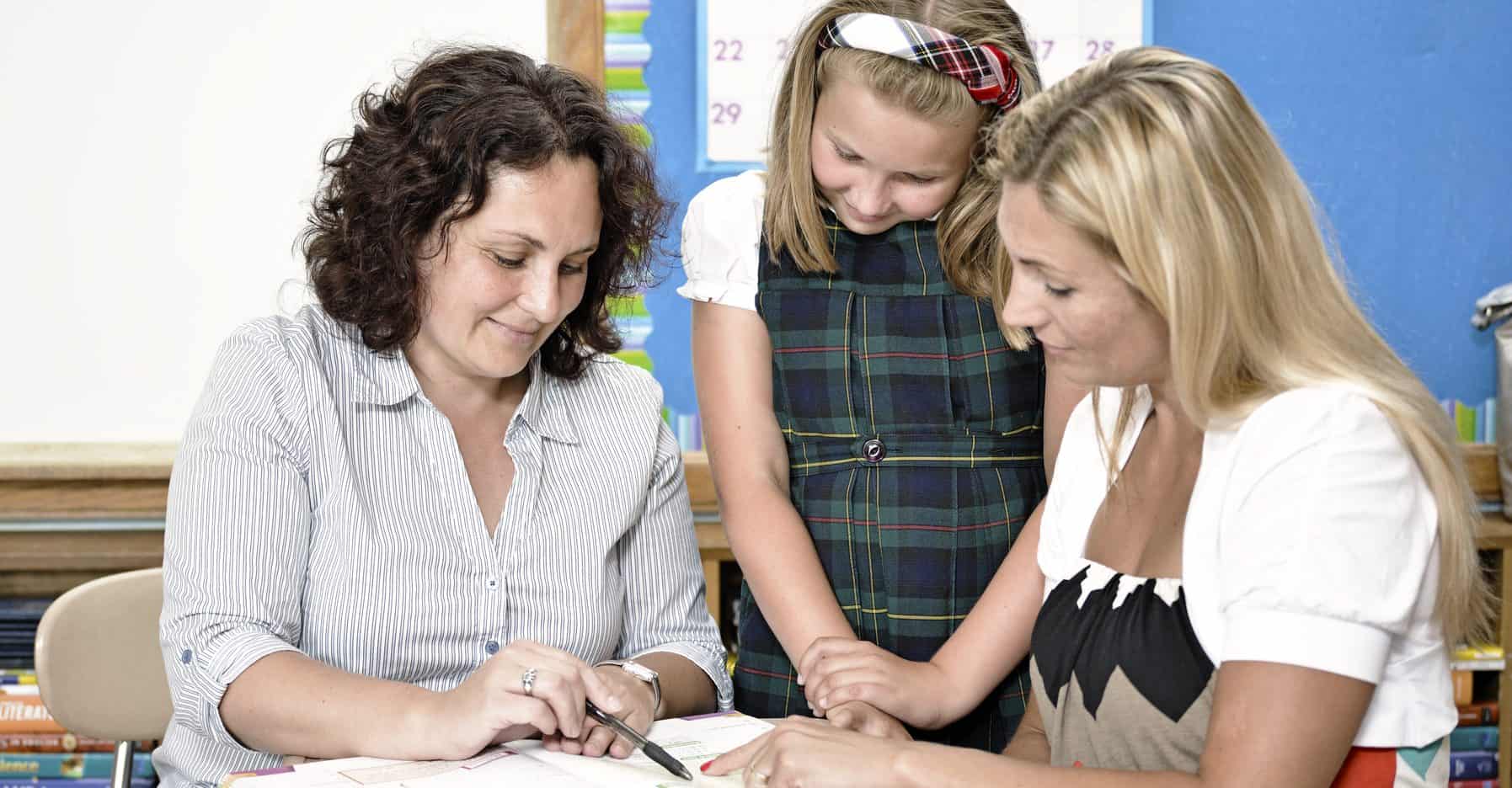Use Expert-Led Communication Strategies to Engage the Families in Your District
Check out Waterford’s on-demand webinars and learn how you can build a school environment that values families and advises teachers as they connect and collaborate with families.
Regular family-teacher communication is a meaningful step to long-term family engagement. As Candra Morris, VP of Professional Learning at Waterford.org, notes in a recent article, “Academic success for students requires a partnership between educators and families.”
Read on to learn how to communicate more effectively with the families in your school. Included are classroom strategies you can share with your teachers as well as administrator-focused tips.
Prioritize Two-Way Communication with Families

One-way communication is:
- Linear
- Authoritative
- Limited
And two-way communication is:
- Interactive
- Respectful
- Feedback-oriented
While one-way communication can have a time and place, too much of it can make families feel left out of classroom decision-making. When you can, choose meaningful connection by prioritizing two-way communication with families. A few examples of two-way communication between families and teachers in schools include emailing, in-person or video calls, and teacher apps that include a messaging system.
Effective, Personalized Engagement Strategies for Teachers
Use the following suggestions as possible techniques to encourage parental collaboration and communication. Remember: connecting with families isn’t a cookie cutter process, and what works for some might not work for others.
Tailor Communication Based on Family Preferences
Encourage your teachers to get to know each family’s engagement preferences early in the school year. That way, they can tailor their connection methods to be most effective for each family.
Celebrate Student Wins
In all communication methods with families, teachers should remember to celebrate a student’s wins. Often, educators communicate a student’s negative behaviors without sharing their successes. Families work hard to help their students succeed, and they want to celebrate improvement with you just as much as they want to stay informed on areas of growth.
In-Person Communication
Volunteer opportunities, parent-teacher conferences, and after-school events are all ways your teachers can apply in-person communication. But this form of interaction doesn’t have to stay confined to the classroom. If a family cannot make it to the classroom for any reason, including transportation issues or a demanding work schedule, home visits can be another option.
As you plan in-person meetings and events, consider the accessibility needs a family may have to participate and communicate comfortably in the classroom. “When hosting parent conferences, family engagement activities, or concerts,” Candra Morris notes as an example, “consider requesting an interpreter to meet the language needs of your school.” [1]
Technology-Based Communication
Whether teachers are calling home or updating a classroom app, tech-based communication offers more flexibility to families. Of all the engagement strategies, families often prefer tech-based communication—especially texts.[1] Because every family is operating under their own schedule, virtual or asynchronous interaction options allow them to connect with teachers and support their child’s education in ways that fit within their daily routines.
Written Communication
A take-home newsletter or note for families can help them feel in-the-know. It adds a personal touch for times when one-way communication messages are necessary and provides families with a physical reminder for upcoming events.
The key with written and tech-based communication is to personalize it. Families are more likely to respond and reach out to teachers when they receive personal notes instead of generic announcements.[2] That personal touch shows them that teachers truly care about them and want to keep in regular communication.
If you can, encourage teachers to add a few sentences to each written or tech-based message for a specific family. They could, for example, add how much they’ve enjoyed getting to know a family or invite questions about how to best practice the skills children are learning in class at home.
Family Communication Strategies for Administrators

Get to know families in person during back-to-school nights, parent-teacher conferences, talent shows, or other school events. Introduce yourself and explain your role at your school. Ask families their names and what classroom their student is in, get to know what strengths and areas of improvement their student is working on, and offer your contact information so they know how to reach you.
When families come to you with questions or concerns, prioritize listening first rather than jumping in from the start with a solution (though of course offer assistance and resources when you can).[3] Families can give you first-person insights into how your school can improve—ideas that you may not have considered. Their perspectives are valuable and, as you make it clear that you are listening and want to understand, they will be more likely to feel welcome and continue communicating with you.
On a broader scale, continue to seek input from families through surveys and in-person parent-teacher group meetings. Anonymous surveys in particular can offer families an opportunity to be frank with what they appreciate about your school and what they feel needs improvement. As you develop ways to address these issues, continue seeking feedback from families to make sure you are meeting their needs.
Sources:
1. Morris, C. Why Every Child Needs a Village For Academic Success. 2020. Every Child Deserves a Village.
2. Benson, G.M. Parent-Teacher Communication, Student Engagement, and Math. AMLE Magazine. https://www.amle.org/parent-teacher-communication-student-engagement-and-math/
3. Lynch, M. 2020. 5 Tips for Improving Educational Leadership Communication. The Edvocate. (August).https://www.theedadvocate.org/5-tips-for-improving-educational-leadership-communication/

